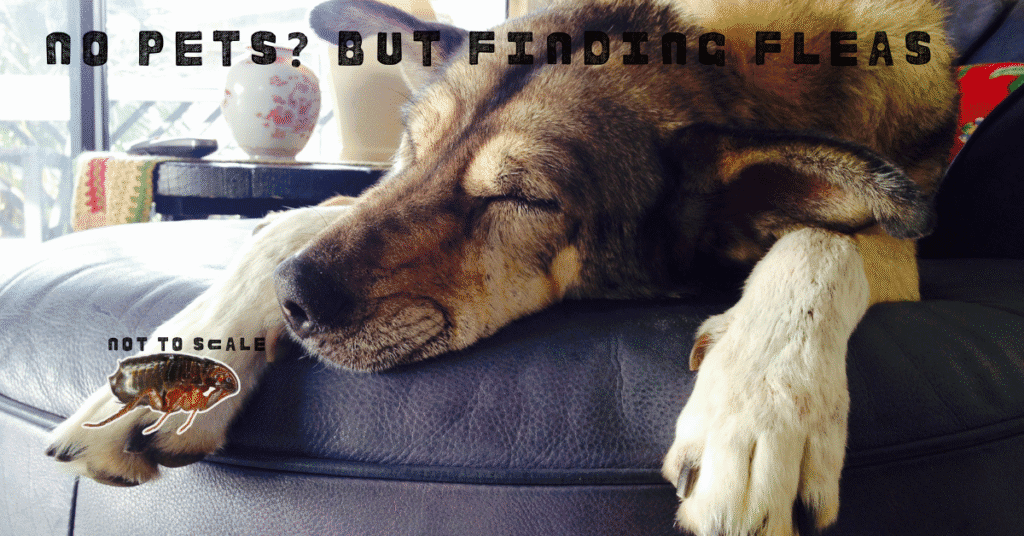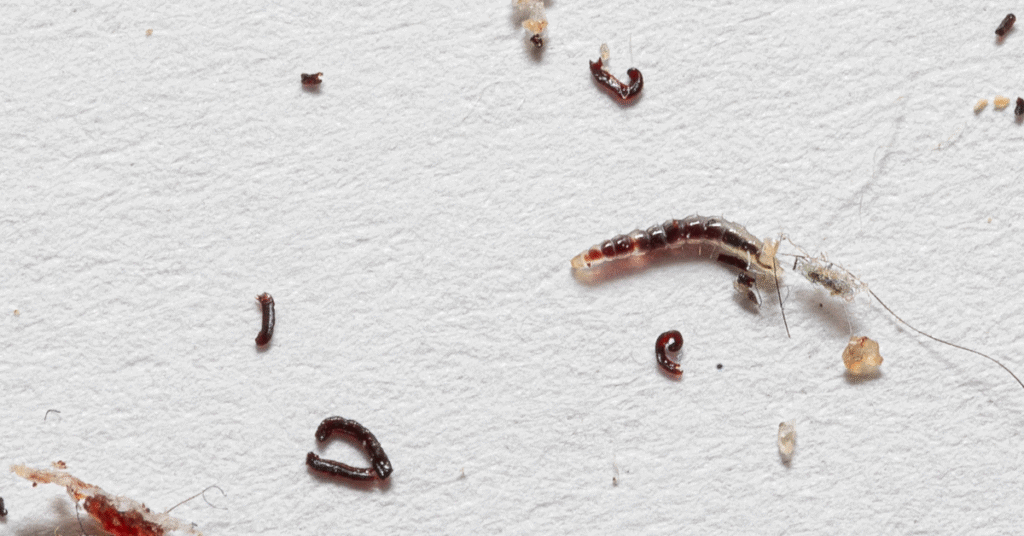Most people assume fleas only become a problem if you have a dog or a cat. The truth is, fleas are opportunists, and they don’t care whether you’re a pet parent or not. Fleas can survive and spread through your environment in surprising ways. Here are some common reasons you could end up with a flea problem, yup, even in a pet-free home.
Pet Sitting a Friend’s Dog or Cat

If you agree to watch a friend’s pet, you could unknowingly invite fleas into your space. Even if the pet only has a mild case, flea eggs may drop onto your rugs, couch, or bedding. A few days or weeks later, those eggs can hatch into flea larvae, and you’ll find yourself dealing with a full infestation.
- Flea eggs are tiny, like grains of salt, and hard to spot.
- One female flea can lay (on average) 20–30 eggs a day.
- Those eggs don’t stick to fur—they fall wherever the animal goes.
Feral Cats in the Neighborhood

Stray or feral cats often seek out cozy shelter under porches, in sheds, or even inside basements. If they’re carrying fleas, they can leave behind eggs and larvae that eventually spread indoors. Learn about the flea lifecycle for more in-depth information.
- Cats are shared hosts for fleas and can drop eggs anywhere they rest.
- If the cat has kittens nearby, the flea population can explode.
- Even if the cats never step foot inside, fleas can migrate indoors through cracks or by hitchhiking on your clothing.
Wildlife Visitors: More Than Just Cats

Fleas don’t just ride around on pets. They infest many types of wild animals, which can bring them close to your home:
- Raccoons – frequent invaders of attics and crawlspaces.
- Opossums – common flea carriers that roam urban neighborhoods.
- Squirrels – often nest in attics and wall voids, dropping flea eggs as they move.
- Rodents (rats, mice, chipmunks) – fleas feed on them and spread indoors.
Once wildlife leaves or dies, hungry fleas look for the next warm-blooded host, which could be you.
Fleas in Secondhand Furniture or Rugs

Buying a vintage couch or used area rug can sometimes come with unwanted “guests.” Flea eggs, larvae, or even dormant pupae can survive for weeks in fabric, waiting for the right conditions to emerge.
- Upholstered furniture is a favorite hiding spot.
- Larvae can feed on organic debris in carpets or cushions.
- A simple thrift store purchase can accidentally kickstart an infestation.
Dormant Fleas in Vacant Homes

If you move into a house or apartment where pets once lived, you could inherit fleas. Even if no pets are present now, flea eggs and especially pupae may still be hiding in carpets, cracks, and baseboards.
- Pupae can remain dormant for weeks (even through winter) or even months.
- Motion, warmth, or carbon dioxide (like when you walk in) triggers them to hatch.
- That’s why some people discover adult fleas immediately after moving into a “clean” place. Check out the guide on flea size here.
Understanding the Flea Life Cycle

To really understand how you can end up with fleas, you need to know how they live. Fleas go through four distinct stages:
Egg
- Laid on the host but quickly falls off into the environment.
- Hatch in about 2–12 days, depending on humidity and temperature.
Larva
- Blind and worm-like, they avoid light and live deep in carpet fibers, cracks, or soil.
- Feed on organic debris, including flea dirt (adult flea feces).
- This stage lasts between 4 and 18 days.
Pupa (Cocoon)
- The most resilient stage. Flea larvae spin silk cocoons and transform into pupae.
- Pupae can stay dormant for weeks to months, waiting for the right conditions.
- They are triggered to emerge by vibration, warmth, or the carbon dioxide from a passing host.
Adult
- Once emerged, adults seek a host immediately.
- If they find blood, they can live 2–3 months, reproducing quickly.
- Without a host, adults may only survive 1–2 weeks.
Why the Pupa Stage Is So Tricky
The cocoon is sticky and well-camouflaged, clinging to carpet fibers or floor cracks. Vacuuming may not remove all of them. Because they wait for motion to emerge, a house can appear “flea-free” until someone moves in. Then, within hours, hungry adults leap out to feed.
Final Thoughts on Getting Fleas Without Pets
So, can you get fleas without pets? Absolutely. Whether they come in with wildlife, a friend’s dog, or lie dormant in your carpet, fleas are survival experts. Knowing how they spread, and how their lifecycle works, is the first step to keeping your home flea-free.
